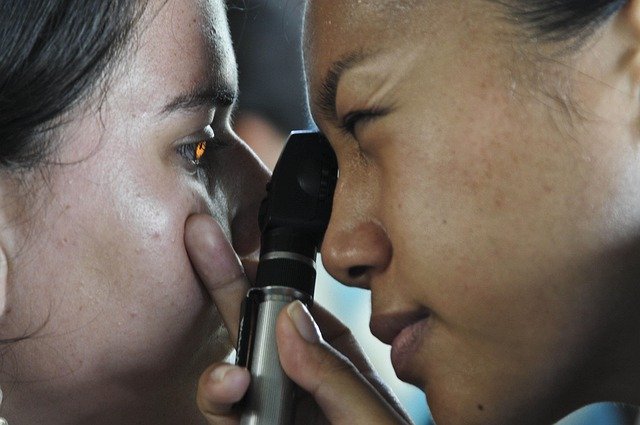Understanding Lasik Eye Surgery: Benefits, Prices, and Contraindications
Lasik eye surgery has revolutionized vision correction for millions of people worldwide. This advanced procedure uses laser technology to reshape the cornea, potentially eliminating the need for glasses or contact lenses. Before considering this life-changing procedure, it's important to understand what it entails, its benefits, costs, and whether you're a suitable candidate.

Lasik eye surgery represents one of the most significant advancements in ophthalmology in recent decades. This outpatient procedure typically takes less than 30 minutes per eye and has helped millions achieve improved vision without dependence on corrective lenses. While the technology continues to evolve, understanding the fundamentals of Lasik—including its benefits, costs, and potential limitations—is essential for anyone considering this procedure.
What Are the Main Benefits of Lasik Eye Surgery?
Lasik eye surgery benefits extend far beyond simply reducing dependence on glasses or contacts. For many patients, the procedure delivers immediate improvements in vision quality, often achieving 20/20 vision or better within 24 hours. This quick recovery time allows most people to return to work and normal activities within a day or two.
The procedure also offers long-term benefits. Unlike contacts or glasses that require ongoing maintenance and replacement, Lasik provides a permanent reshaping of the cornea. Many patients report enhanced quality of life through improved peripheral vision and depth perception, particularly beneficial for activities like driving and sports. Additionally, the procedure eliminates common irritations associated with contact lenses, including dry eyes, infections, and the daily hassle of insertion and removal.
How Much Does Lasik Eye Surgery Cost?
The cost of Lasik eye surgery varies considerably based on several factors, including the surgeon’s experience, the technology used, geographical location, and whether both eyes are being treated. In the United States, the average price ranges from $2,000 to $3,000 per eye for standard Lasik procedures.
Premium or custom Lasik procedures utilizing advanced wavefront technology or bladeless techniques typically cost between $2,500 and $4,000 per eye. These higher-end options offer more personalized treatment that may provide better outcomes for certain patients, particularly those with unique corneal irregularities or higher-order aberrations.
Some facilities offer financing plans that allow patients to pay for their procedure over time, typically with monthly payments ranging from $100 to $300 depending on the total cost and payment term. It’s worth noting that while Lasik is considered an elective procedure not typically covered by insurance, some vision insurance plans offer discounts, and flexible spending accounts (FSAs) or health savings accounts (HSAs) can often be used to pay for the procedure with pre-tax dollars.
| Provider Type | Average Cost Per Eye | Technology Used | Financing Options |
|---|---|---|---|
| Academic Medical Centers | $1,500-$2,500 | Standard + Some Advanced | Limited |
| Private Practices | $2,000-$3,500 | Standard to Advanced | Usually Available |
| Lasik Chains/Centers | $1,000-$2,500 | Varies Widely | Extensive Plans |
| Premium Providers | $3,000-$4,500 | Latest Technology | Customized Plans |
Prices, rates, or cost estimates mentioned in this article are based on the latest available information but may change over time. Independent research is advised before making financial decisions.
What Are the Contraindications for Lasik Eye Surgery?
Not everyone is a suitable candidate for Lasik eye surgery. Understanding surgery eye contraindications is crucial before pursuing this procedure. Several conditions may disqualify potential patients or increase their risk of complications.
Age is an important factor—patients must be at least 18 years old (preferably 21) with a stable prescription for at least one year. Those with thin corneas may not have enough tissue for safe reshaping, making them poor candidates. Certain eye conditions also present contraindications, including keratoconus (corneal thinning), severe dry eye syndrome, glaucoma, cataracts, and advanced diabetic retinopathy.
Systemic conditions that affect healing, such as autoimmune diseases like rheumatoid arthritis or lupus, may also preclude Lasik surgery. Pregnant or nursing women should postpone the procedure due to hormonal fluctuations that can temporarily alter vision. Additionally, those taking medications that may interfere with corneal healing, such as certain acne medications or immunosuppressants, should discuss these with their ophthalmologist.
What Does the Lasik Procedure Involve?
The Lasik procedure begins with comprehensive pre-operative testing to map the cornea’s unique shape and thickness. On the day of surgery, numbing eye drops are applied, eliminating the need for general anesthesia. The surgeon creates a thin flap in the cornea using either a microkeratome blade or a femtosecond laser in bladeless Lasik.
Once the flap is created, it’s folded back to expose the underlying corneal tissue. The surgeon then uses an excimer laser to precisely remove microscopic amounts of corneal tissue, reshaping it according to the patient’s prescription. This reshaping allows light entering the eye to focus properly on the retina. After the reshaping is complete, the corneal flap is repositioned, serving as a natural bandage that promotes quick healing.
The entire procedure typically takes about 10-15 minutes per eye, with patients remaining awake throughout. Most people report minimal discomfort, often describing a sensation of pressure rather than pain. Vision improvements can begin almost immediately, with many patients noticing significant changes within hours.
What is the Recovery Process After Lasik Surgery?
Recovery from Lasik eye surgery is remarkably quick for most patients. Immediately following the procedure, patients may experience temporary burning, itching, or a feeling that something is in the eye. Vision is typically blurry or hazy for the first few hours, but significant improvement often occurs by the next morning.
Patients receive detailed aftercare instructions, including the use of prescribed eye drops to prevent infection and inflammation. Protective eye shields are typically worn while sleeping for the first week to prevent accidental rubbing or pressure on the eyes. Most surgeons schedule a follow-up appointment within 24-48 hours to ensure proper healing.
While many patients return to work within a day or two, certain activities should be avoided during recovery. Swimming, hot tubs, and contact sports are typically restricted for 1-2 weeks. Patients should also avoid rubbing their eyes and wearing eye makeup for at least a week. Some individuals may experience dry eyes, glare, halos, or night vision difficulties during the healing process, but these symptoms typically resolve within 3-6 months as the eyes fully heal.
This article is for informational purposes only and should not be considered medical advice. Please consult a qualified healthcare professional for personalized guidance and treatment.




